bruh
Credit:
-@UziDoorman for the plane
-@LM0418 for the enigne
About Dc-8
The Douglas DC-8 (sometimes McDonnell Douglas DC-8) is an early long-range narrow-body jetliner designed and produced by the American Douglas Aircraft Company. Work began in 1952 towards the United States Air Force's (USAF) requirement for a jet-powered aerial refueling tanker. After losing the USAF's tanker competition to the rival Boeing KC-135 Stratotanker in May 1954, Douglas announced in June 1955 its derived jetliner project marketed to civil operators. In October 1955, Pan Am made the first order along with the competing Boeing 707, and many other airlines soon followed. The first DC-8 was rolled out in Long Beach Airport on April 9, 1958, and flew for the first time on May 30. Following Federal Aviation Administration (FAA) certification in August 1959, the DC-8 entered service with Delta Air Lines on September 18.

Air Jamaica Dc-8-62H
Variant Dc-8-61
The "Super DC-8" Series 61 was designed for high capacity and medium range. It had the same wings, engines and pylons as the -55, and sacrificed range to gain capacity. Having decided to stretch the DC-8, Douglas inserted a 240-inch (6.1 m) plug in the forward fuselage and a 200-inch (5.1 m) plug aft, taking overall length to 187 feet 4 inches (57.10 m). The added length required strengthening of the structure, but the basic DC-8 design already had sufficient ground clearance to permit the one-third increase in cabin size without requiring longer landing gear. The variant first flew on March 14, 1966, and was certified on September 2, 1966, at a maximum weight of 325,000 pounds (147,420 kg). Deliveries began in January 1967 and it entered service with United Airlines in February 1967. It typically carried 180–220 passengers in mixed-class configuration, or 259 in high-density configuration. A cargo door equipped DC-8-61CF was also available. 78 -61s and 10 -61CFs were built.
United Airlines DC-8-61

Air Transport International (ATI) DC-8-61(F)
About United Airlines
United Airlines, Inc. is a major airline in the United States headquartered in Chicago, Illinois. United operates an extensive domestic and international route network across the United States and all six inhabited continents primarily out of its seven hubs, with Chicago–O'Hare having the largest number of daily flights and Denver carrying the most passengers in 2023. Regional service is operated by independent carriers under the brand name United Express.
United was formed by the amalgamation of several airlines in the late 1920s, the oldest of these being Varney Air Lines, created in 1926 by Walter Varney who later co-founded the predecessor to Continental Airlines. In 1997, United became one of the five founding airlines of Star Alliance, of which it remains a member today. Since its merger with Continental in 2010, United consistently ranks as one of the world's largest airlines; it is currently first by the number of destinations served and fleet size, and second in terms of revenue and market capitalization.
United Airlines Flight 173
- Aircraft
The aircraft involved was a McDonnell Douglas DC-8-61, powered by four Pratt & Whitney JT3D engines and delivered new to United Airlines in May 1968. The aircraft was registered N8082U and was the 357th DC-8 built at the Long Beach assembly plant. The 60 series was a stretched version of the DC-8 that was 36.7 ft (11.2 m) longer than the DC-8 series 10 through 50.

N8082U, the United Airlines DC-8-61 involved, pictured in 1972 sporting the previous livery
- Flight
Flight 173 was piloted by an experienced cockpit crew, consisting of Captain Malburn "Buddy" McBroom (52), First Officer Roderick "Rod" Beebe (45), and Flight Engineer Forrest "Frosty" Mendenhall (41). McBroom had been with United Airlines for 27 years; he was one of the airline's most senior pilots with more than 27,600 hours of flight time, of which about 5,500 hours had been as a DC-8 captain. Beebe had been with the airline for 13 years and had logged more than 5,200 flight hours. Mendenhall had close to 3,900 flight hours and had been with the airline for 11 years. The first officer and flight engineer had over 2,500 hours of flying experience between them in the DC-8.
Flight 173 departed from Denver's Stapleton International Airport at 15:47 MST with 189 people on board—eight crew and 181 passengers. The estimated flight time was 2 hours and 26 minutes, and the planned arrival time in Portland was 17:13 PST, about 40 minutes after sunset. According to the automatic flight plan and monitoring system, the total amount of fuel required for the flight to Portland was 31,900 lb (14,500 kg). About 46,700 lb (21,200 kg) of fuel were on board the aircraft when it departed the gate in Denver.
As the landing gear was being lowered on approach to Portland International Airport, the crew felt an abnormal vibration and yaw of the aircraft and a lack of an indicator light showing the gear was lowered successfully. The crew requested a holding pattern to diagnose the problem, and for about the next hour, the crew flew over southeast Portland and worked to identify the status of the landing gear and prepare for a potential emergency landing. During this time, none of the three cockpit flight crew effectively monitored the fuel levels, which was exacerbated by the fact that the gear was down with the flaps at 15° during the entire hour-long holding maneuver, significantly increasing fuel burn rate. As a result, the number 3 and 4 engines flamed out.
As the crew prepared for a final approach for an emergency landing on runway 28L, they lost the number one and number two engines to a flameout, at which point a mayday was declared. This was the last radio transmission from Flight 173 to air traffic control; it crashed into a wooded section of a populated area of suburban Portland, about six nautical miles (11 km; 7 mi) southeast of the airport.
Wreckage after the accident
Of the crew members, two were killed, flight engineer Mendenhall and lead flight attendant Joan Wheeler; two sustained injuries classified by the National Transportation Safety Board (NTSB) as "serious", and four sustained injuries classified as "minor/none". Eight passengers died, and 21 had serious injuries.
The 304th Aerospace Rescue and Recovery Squadron of the Air Force Reserve, based at Portland International Airport, was conducting routine training flights in the area that evening. Airborne aircraft from this unit (HH-1H Huey helicopters) were immediately diverted to the crash scene and proceeded to transport many of the survivors to local hospitals.
- Aftermath
This last NTSB recommendation following the incident, addressing flight deck resource management problems, was the genesis for major changes in the way airline crewmembers were trained. This new type of training addressed behavioral management challenges such as poor crew coordination, loss of situational awareness, and judgment errors frequently observed in aviation accidents. It is credited with launching the crew resource management (CRM) revolution in airline training. Within weeks of the NTSB recommendation, NASA held a conference to bring government and industry experts together to examine the potential merits of this training.
United Airlines instituted the industry's first CRM for pilots in 1981. This program is now used throughout the world, prompting some to call the United 173 accident one of the most important in aviation history. The NTSB Air Safety Investigator who wrote the CRM recommendation was aviation psychologist Alan Diehl.
Assigned to investigate this accident, Diehl realized it was similar to several other major airline accidents including United Airlines Flight 2860, which occurred a little over a year before Flight 173 and under near identical circumstances; Eastern Air Lines Flight 401; and the Tenerife airport disaster. Diehl was familiar with the research being conducted at NASA’s Ames Research Center and believed these training concepts could reduce the likelihood of human error.
Held responsible for the accident, Captain McBroom lost his pilot's license and retired from United Airlines shortly afterwards. He spent his remaining years battling health problems related to injuries sustained in the crash, as well as lung and prostate cancers. Family members and passengers who spoke to McBroom at a 1998 reunion of crash survivors reported he was "a broken man" plagued by guilt over his role in the accident. He died on October 9, 2004, at age 77.
One of the surviving passengers, who was three years old in 1978, was awarded US$900,000 in damages in 1984 (equivalent to $2,639,462 in 2023) from the airline by a Portland jury. She was injured and both her little sisters and her parents were killed.
Published in February 2018, Crash Course by Julie Whipple focuses on the events of the night of the crash, the investigation, and aftermath of the crash.
Specifications
General Characteristics
- Predecessor Douglas SuperDC-8-71
- Created On Android
- Wingspan 120.9ft (36.8m)
- Length 165.9ft (50.6m)
- Height 39.6ft (12.1m)
- Empty Weight N/A
- Loaded Weight 120,650lbs (54,726kg)
Performance
- Power/Weight Ratio 0.449
- Wing Loading 48.7lbs/ft2 (237.7kg/m2)
- Wing Area 2,477.7ft2 (230.2m2)
- Drag Points 13107
Parts
- Number of Parts 509
- Control Surfaces 9
- Performance Cost 3,030

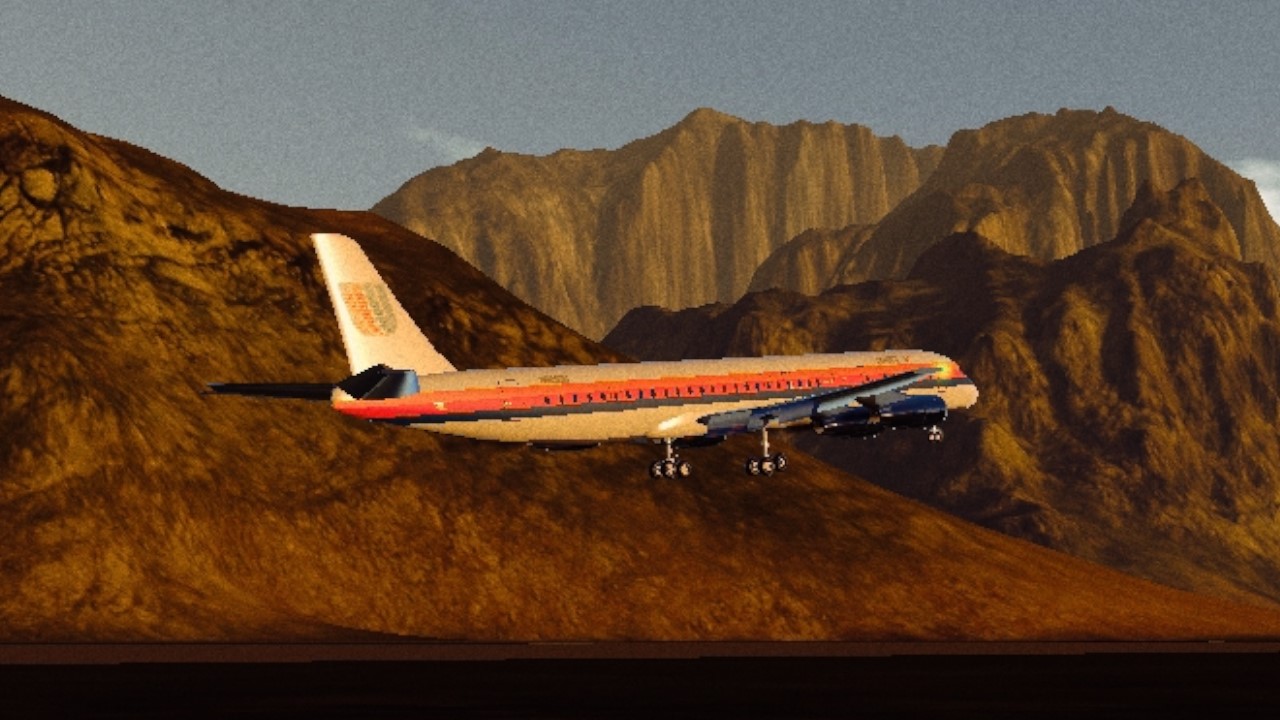
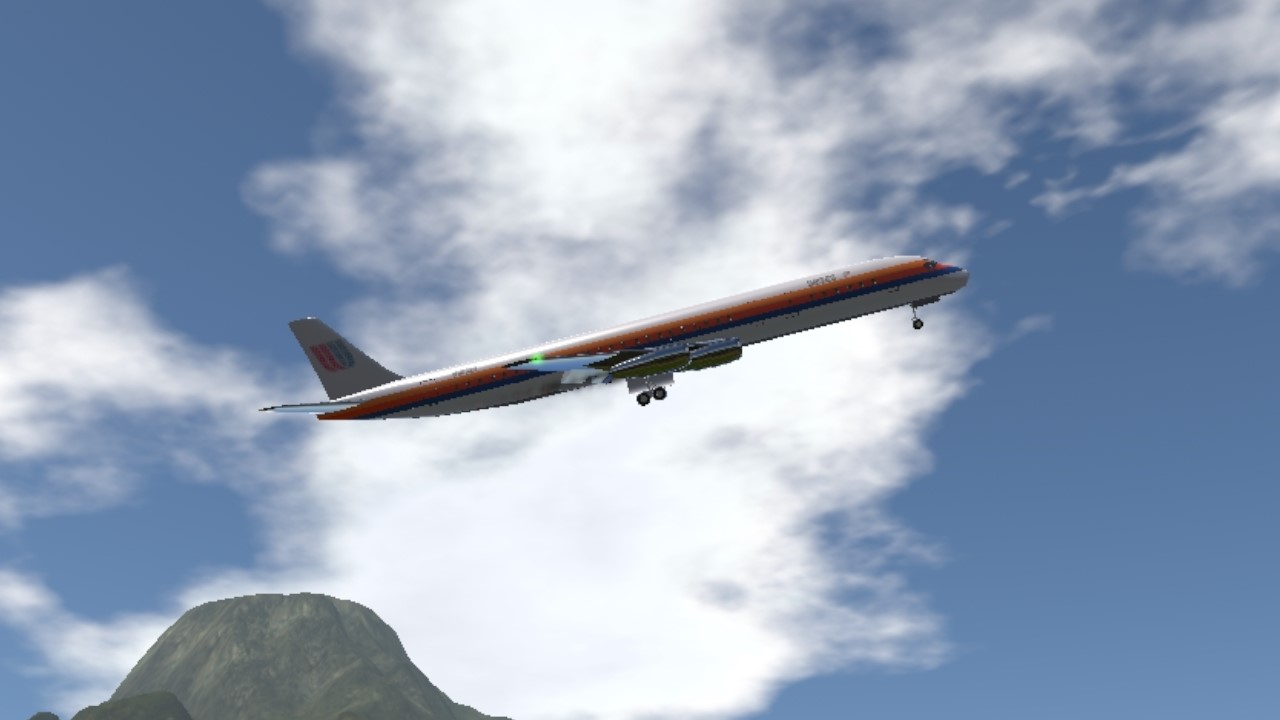
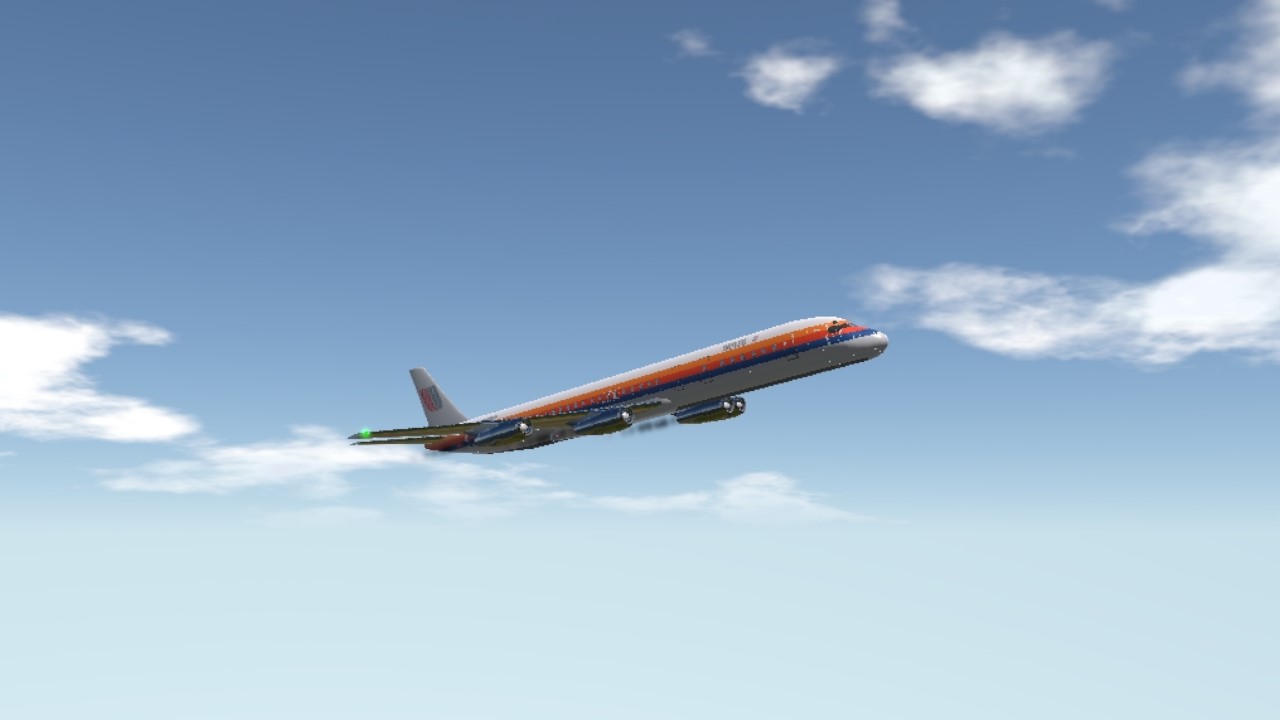
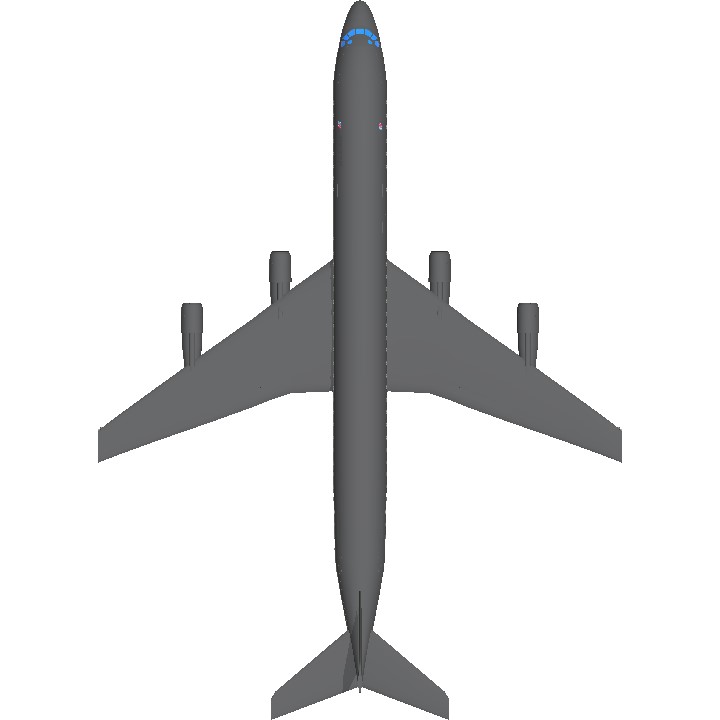
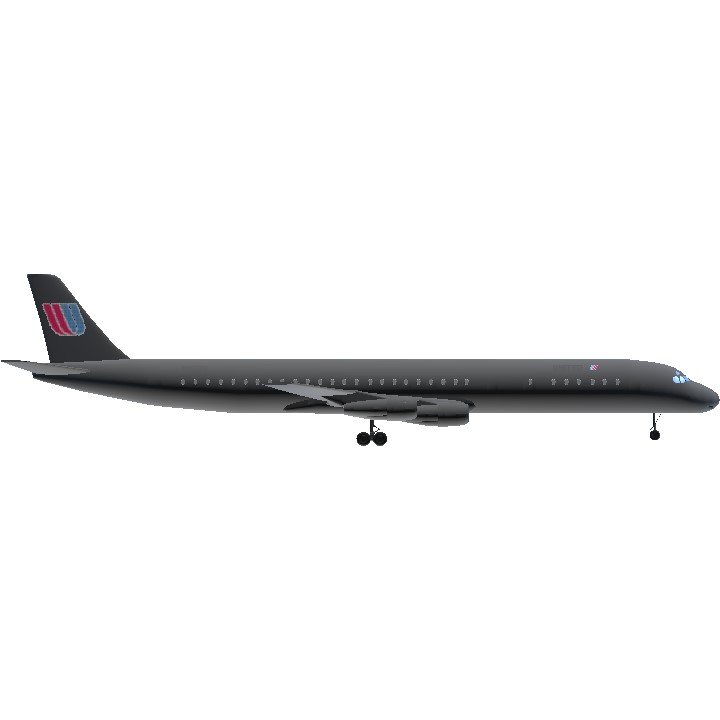
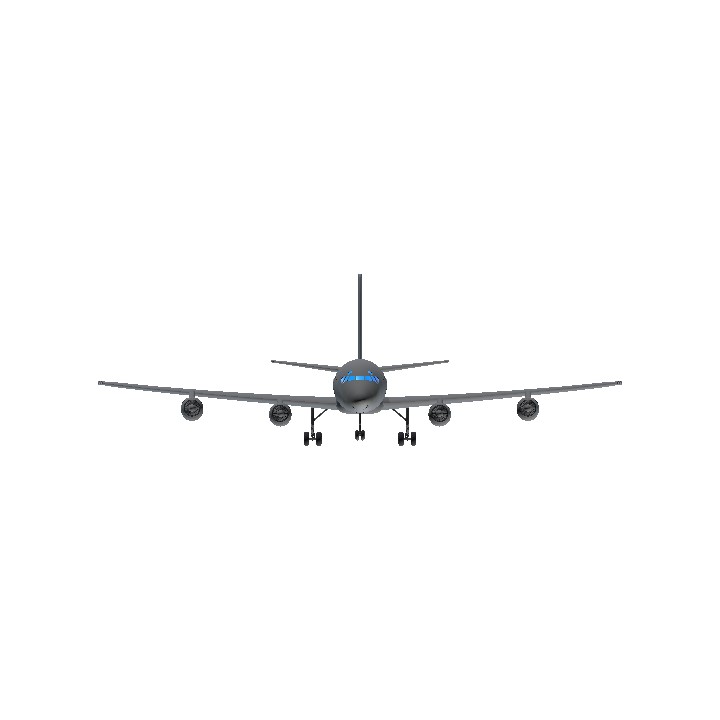
@NormalCv580enjoyer link here
@NormalCv580enjoyer I took all of the above information from Wikipedia and edited it
Bro have DeadlyDialga ahh description 💀 Btw nice work on the livery
做的非常好,加油